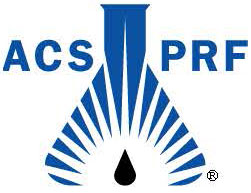Current Projects:
CO2-Based Geothermal Energy and Renewable Energy Storage
TBD
Defining New Porosity - Permeability Relationships Based on Core-scale Heterogeneity
TBD
Storing CO2 in the Built Environment: CO2 Sequestration in Cementitious Materials
TBD
Past Projects:
Toxic element leaching from shales in contact with hydraulic fracturing fluids
View a recorded presenation discussing the sustainability challenges of shale gas development
Role of wettability in enhancing shale gas production
This study seeks
to gain a fundamental understanding of the mechanism controlling shale
wettability change during the shut-in period that leads to reduced
flowback and, by inference, enhanced gas production from shale gas
reservoirs. Current work related to this project includes investigating
the role of mixed charge surfactant adsorption on shales in altering
shale wettability through us of contact angle and surface tension
measurements. Atomic force microscopy is also being used to
characterize surface charge and mineral phase distribution at the
sub-micron scale to explore surfactant adsorption mechanisms on
heterogeneous, mixed charge shale materials. We have also recently
initiated a neutron imaging study at ORNL to investigate the role of
mixed charge surfactants in controlling the rate of water imbibition
into shale fractures. To date, we have utilized neutron CT imaging to
quantify the rate of water uptake into shale fractures. Future neutron
studies include small angle neutron scattering experiments to determine
methane accessibility to sub-250 nm shale pores after exposure to a
range of surfactant concentrations.
Impact of Microstructure on the Containment and Migration of CO2 in Fractured Basalt Reservoirs
The overall
objective of the this
project is to advance the scientific and technical understanding of
microstructure and surface chemistry impacts on the flow and
mineralization of CO2 injected into fractured basalt. This objective
will be pursued through an approach that integrates bench-scale
CO2-water-rock testing, geomechanical and geochemical characterization
of rock cores, and advanced in situ characterization of the evolution
of fracture structure and carbon trapping mechanisms. Basalt samples
from relevant formations will be used together with synthetic basalts
that are more reproducible specimens for systematic evaluation of the
effects of specific variables on CO2 behavior. Laboratory experiments
will evaluate the extent of carbon sequestration and the distribution
of trapping among different mechanisms under both static (i.e. no-flow)
conditions that simulate dead-end fractures and dynamic (i.e. advective
fluid flow) conditions that simulate major fracture flow paths. This
project will be conducted in collaboration with colleagues from
Washington University in St. Louis. It is funded by the U.S. Department
of Energy National Energy Technology Laboratory.






